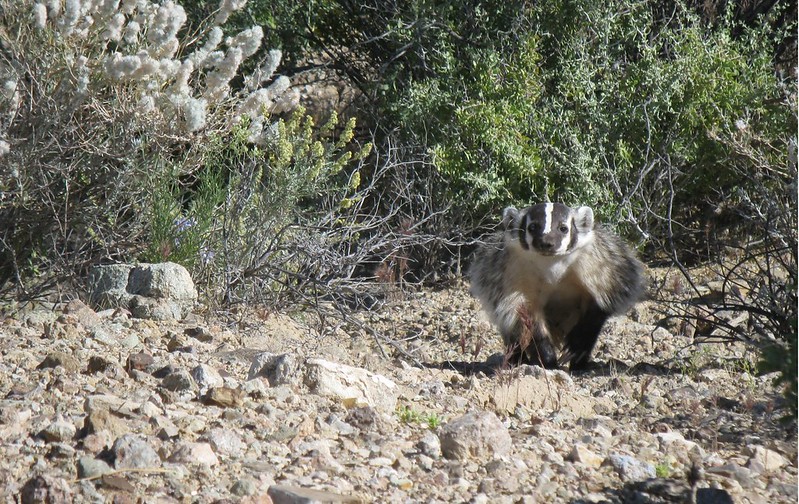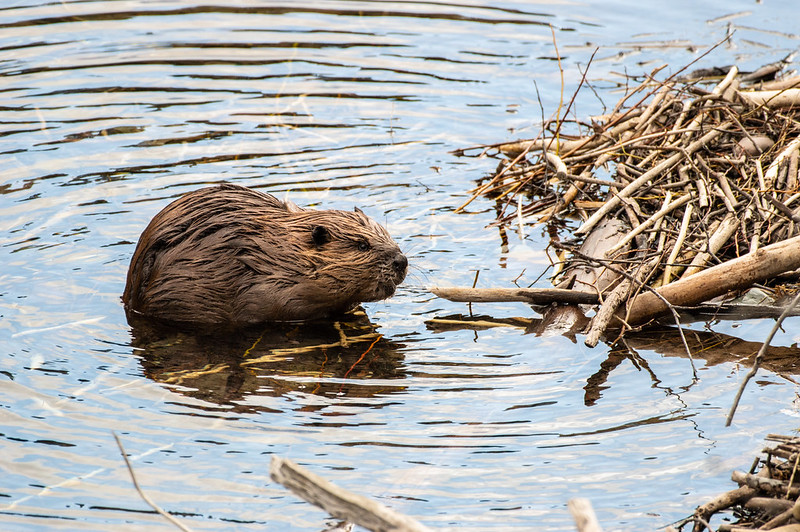Whether you spend a year, season or day here in the Sawtooths, the wildlife you encounter are one of the many things that make this a special place. However, some of our local residents can be more elusive than others. While I am a big fan of the Pronghorn and Mule Deer, I want to highlight two of our other species and where they might be found across the SNRA.

Photo Credit: “American Badger in Owl Canyon Campground Area in Barstow Field Office” by blmcalifornia is marked with Public Domain Mark 1.0.
The American Badger is the only badger species native to North America. This nocturnal, solitary animal is especially adapted for digging, both for building their own shelters and for hunting prey. Badgers have multiple burrows throughout their territory. During Spring and Summer, they rotate through these burrows, sleeping in a different burrow most every night. In the Fall they may stay in a burrow for a few nights before moving on. During Winter, badgers select one burrow to stay in throughout the entire season. To help retain heat in the cold months, badgers will block the entrance with soil.
While the American Badger are omnivores, they prefer meat. With their sharp claws, they are excellent at digging into the burrows of ground squirrels. They are even known to pack the entrance to trap their prey in their burrows. Abandoned burrows and ones they clear become new homes for many animals including owls, reptiles, amphibians, insects and other mammals.
The best place to spot American Badgers in the SNRA would be in the Sagebrush Steppe at sunrise or sunset.
Fun Fact: Honey Badgers are not the same as the American Badger. Honey badgers are found throughout Africa and Asia and are actually closer related to Wolverines than either the American or European Badger.

Photo Credit: “North American beaver (Castor canadensis)” by GlacierNPS is marked with Public Domain Mark 1.0.
The American Beaver is the largest rodent in North America. These amazing animals inhabited the entire continent pre-European exploration and settlement. Before the North America fur trade, this land used to be a much marshier/wetter place. That is because beavers are an ecosystem engineer, meaning their behavior influences the behavior and characteristics of entire ecosystems. By building dams, they help reduce erosion, slow the flow of water extending the season of perennial streams, and create large wetlands in adjacent land. These wetlands are high in biodiversity because of the increase in water availability and food they provide for every other animal.
With waterproof fur, translucent eyelids, lips behind their front incisors, webbed hindfeet and valves in their ears and noses that can open and close, a beaver’s body is adapted for water. Beavers can swim up to 6 miles per hour when in the water. For reference, that is the length of over one and a half football fields per minute. They need their beaver-made reservoirs for protection. Beavers are very vulnerable on land and weighing up to 70 pounds, they are a delicious meal for any large predator.
The best places to find beavers in the SNRA would be in low elevation creeks, ideally surrounded by aspens, one of their favorite snacks
Fun Fact: In its scientific name, canadensis refers to the beavers presence in Canada. Measuring just under a half mile long, the biggest beaver dam presently known is found in Canada’s Wood Buffalo National Park.
Additional Resources:
https://www.fs.usda.gov/detail/npnht/learningcenter/nature-science/?cid=fseprd878831
Cush is a returning naturalist who spent this last winter teaching elementary students in Southern California. On a clear night you can find him star gazing and listening for owls.